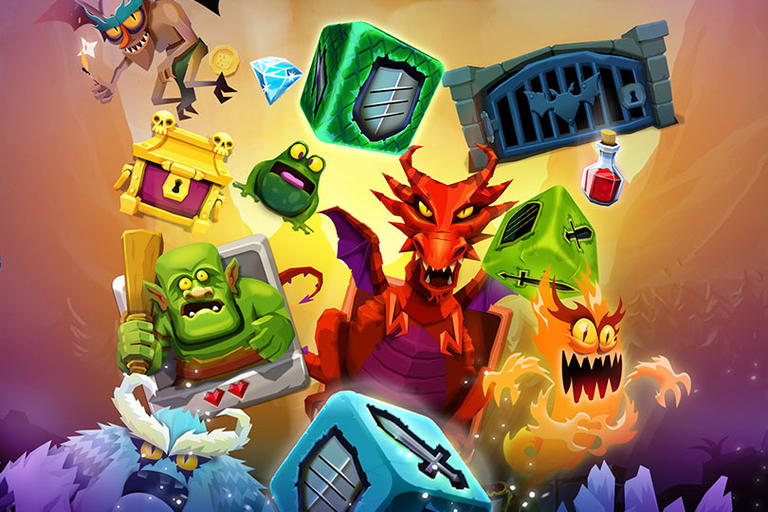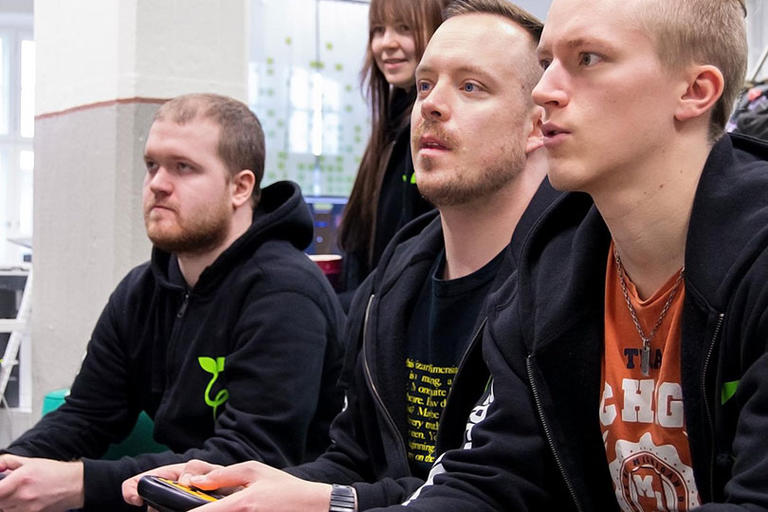Will the grass be greener with interstitial ads?
deltaDNA helps Greener Grass roll out one of mobile marketing’s most-effective techniques.
Greener Grass: A Unity case study
How does a studio make the smartest decisions to balance gameplay, ads, rewarded videos, and in-app purchases (IAPs)? Designers at Greener Grass, a Finnish development studio, were committed to providing entertaining gameplay with as few distractions as possible. They worried that interstitial ads in particular would lower ratings and retention numbers. Yet they were quite aware that their commercial success depended on optimizing revenue opportunities.

Using A/B testing and analytics to validate interstitials
Negative preconceptions about interstitial ads don’t come out of nowhere – poorly executed ad strategies have ruined many games. Greener Grass didn’t want to run that risk with its first offering, Dice Hunter: Quest of the Dicemancer. A fast-moving, free-to-play (F2P) casual mobile game, its success depends on relatively fast conversions. So how would different interstitial ad strategies affect Dice Hunter?

Answering any question like this demands A/B testing and analytics. Greener Grass’ managing director Atte Kotiranta was familiar with deltaDNA, one of the gaming industry’s leading analytics platforms (deltaDNA works on any game engine, with any backend, and with any monetization system). His team set up tests that measured conversion and retention differences between showing no interstitials and showing interstitials after an introductory period.
The results were clear and dramatic. Showing interstitials:
- Significantly increased first purchases (+40%) and revenue (+58%)
- Increased average revenue per daily active user (ARPDAU) by 65%
- Did not negatively impact player retention, level starts, or rewarded video views

The seeds of Greener Grass
When Rovio closed its Tampere, Finland studio in 2015, 17 of the employees stayed together and formed Greener Grass. Currently, Greener Grass employs 24 developers and has two titles – Dice Hunter: Quest of the Dicemancer and Golden Roll: The Dice Game – under its belt, along with several codevelopment projects. The studio targets a casual gaming audience that enjoys board games and RPGs.

Monetizing with Unity lets developers focus on gameplay
For a number of reasons, Greener Grass has always been a Unity shop. Kotiranta says, “Most of us have become experts with Unity, and we’ve never had any reason to consider alternatives. The Unity Editor lets us involve artists and designers more deeply in the development process, which reduces a lot of back-and-forth discussions and speeds up game creation.” The platform enables easily sharing resources across games and enjoys extensive third-party support beyond the considerable resources available in the Unity Asset Store.
The studio uses Unity IAP to set up in-app purchases across iOS and Android devices with a single, unified API. And they exclusively use Unity Ads to serve all their ads (bringing in 20–25% of revenue) to drive revenue and player engagement. “With Unity monetization tools, we can focus on game development and know that we’re getting the best value from placements,” adds Jarmo Kauko, Greener Grass’ technical director.
Interstitial ads: Game developers dislike them, marketers love them
It’s understandable why developers often have a gut aversion to interstitial ads. When you’ve applied all your creativity and effort to creating a gorgeous game sequence, a commercial interruption is counterintuitive at best. According to Kauko, “I think many of the developers thought of ads as a necessary evil, annoying but at the same time important.” There’s a particular resistance to interstitials, where the ad completely displaces the game and requires an action to move forward.
Yet the potential benefits of interstitials are compelling. For example, devoting 100% of the screen image to the message makes for deeper impressions, which lead to higher click-through rates, which lead to more conversions.
In addition, interstitials can provide useful metrics such as comparative time-on-screen and expansion rates. Indeed, for marketers, there’s not much debate – interstitials work.
Actionable data from deltaDNA and A/B testing
Faced with hesitant developers and the business imperative of increasing revenues, Greener Grass turned to deltaDNA, a well-known game-analytics platform and company (now part of the Unity family) dedicated to “Better games for everyone.”
Greener Grass creative director Henri Roth echoes deltaDNA’s position: “To know for sure what works for players, you have to run A/B tests and implement changes accordingly.” A/B testing would let Greener Grass see exactly how different configurations with interstitials would affect revenue and retention, and with that data they can implement the smartest strategies for monetization.
The test setup enabled gathering data from a meaningful sample:
- The A group of 5,507 players saw no interstitials or related stickers in Store view.
- The B group of 5,519 players saw interstitials between levels after level 12 with a minimum of seven minutes between ads. All Store views included a sticker that said: “Any purchase removes ads between levels!”
- The three-week test period targeted players in France, Germany, Italy, Japan, Korea, Russia, Spain, Taiwan, the U.K., and the U.S.
Roth adds, “We felt quite safe with this A/B experiment because with Unity it would be easy to stop the interstitials immediately if we found a problem.”
deltaDNA capabilities let developers design the test to find out how the presence of between-level interstitials would specifically affect:
- First purchases
- Ad revenue
- Player activity, as measured by level-start counts
- Rewarded video views

The results are clear – interstitials work
It’s hard to argue against interstitial ads with test results such as:
- 40% more first-time purchasers
- 57.6% greater revenue
- 64.8% increase in ARPDAU
- No significant differences in retention or rewarded video views, and only a few negative ratings
As a result of the testing, Greener Grass modified the monetization mix to encourage faster, small-purchase and on-going rewarded video opportunities. Kotiranta says, “We can’t rely on a few high-paying users because the game runs out of purchases relatively early. We want players who enjoy the game to make at least one purchase and then keep playing.”
Now, interstitial ads between levels appear after the first 12 levels. After a rewarded video, interstitials don’t appear for 15 minutes. Some between-level interstitials pitch IAPs, and after any purchase, interstitial ads end.
Greener Grass is looking forward to even more operational and analytics capabilities from Unity and deltaDNA, particularly as deltaDNA features are integrated into the Unity platform. “Creating a great game is very rewarding, but it’s such a competitive industry that you can’t stop there,” Kotiranta notes. “You need testing and analytics to succeed, so we’re very happy that deltaDNA and Unity have made these capabilities a seamless part of our development environment.”